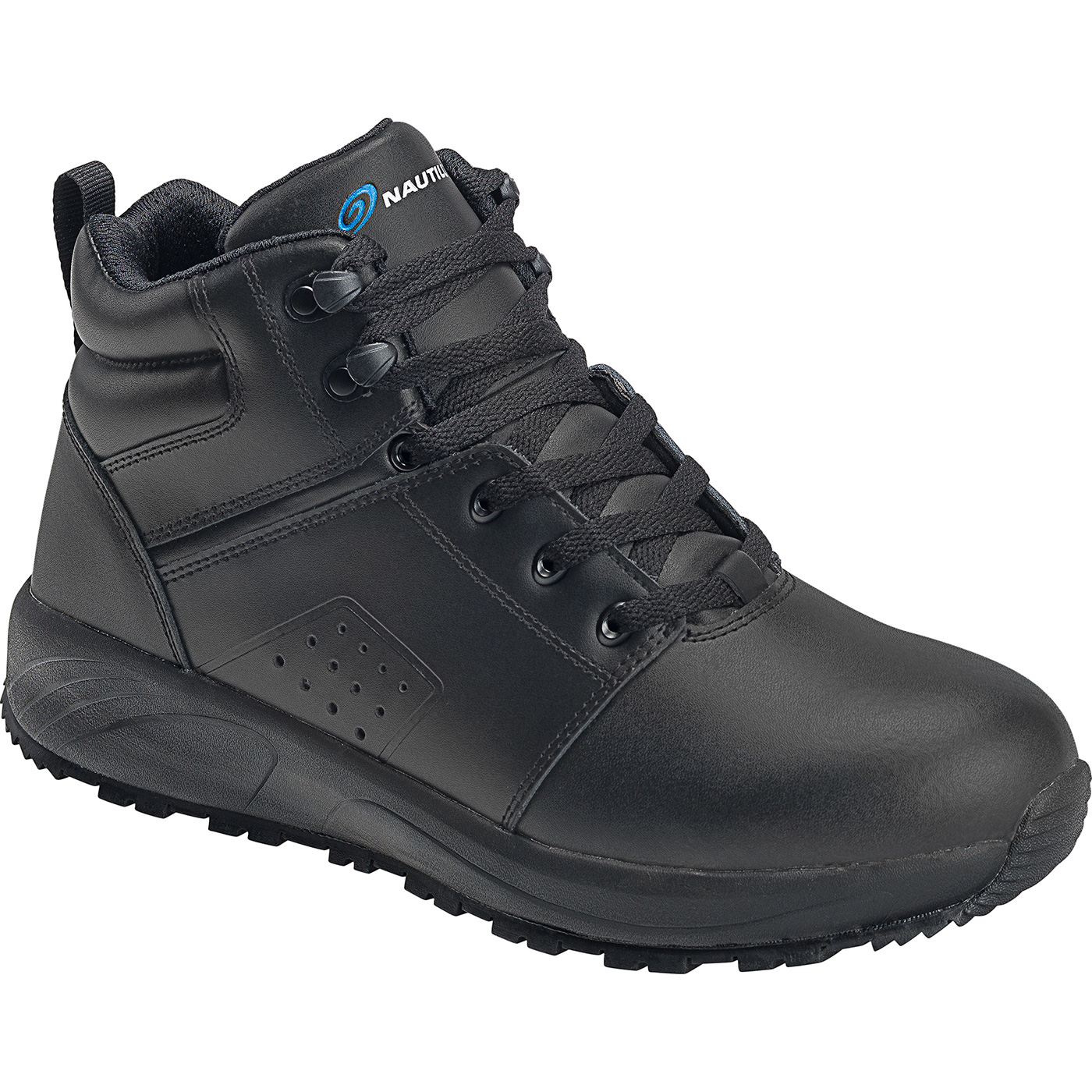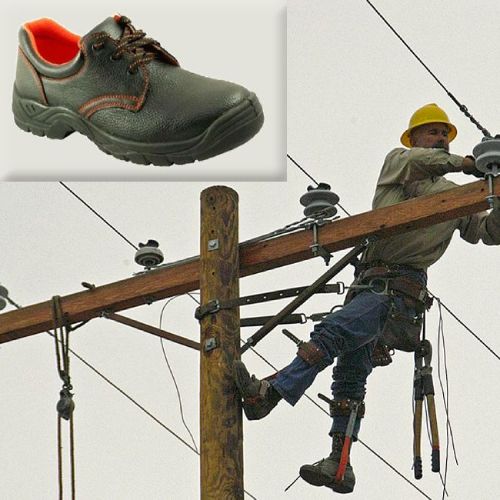Why Electrical Hazard Safety Shoes Matter
In the workplace, electrical hazards pose a significant threat to employee safety. Electrical shock can cause serious injuries, even fatalities, making it essential to take preventive measures. One crucial aspect of electrical hazard prevention is wearing the right footwear. Electrical hazard safety toe shoes are designed to protect workers from electrical shock, providing a critical layer of defense against this potentially deadly hazard. By wearing electrical hazard safety toe shoes, workers can significantly reduce their risk of electrical shock, ensuring a safer working environment for everyone. In fact, the Occupational Safety and Health Administration (OSHA) requires employers to provide personal protective equipment, including safety shoes, to employees working in hazardous environments. With the right electrical hazard safety toe shoes, workers can have peace of mind, knowing they are protected from the dangers of electrical shock.
Understanding Electrical Hazard Ratings: What You Need to Know
When it comes to selecting the right electrical hazard safety shoes, understanding the different electrical hazard ratings is crucial. Two common ratings are EH (Electrical Hazard) and ESD (Electrostatic Dissipative). EH-rated shoes are designed to protect against electrical shock, while ESD-rated shoes are designed to dissipate static electricity. Industries and jobs that require specific electrical hazard ratings include electricians, construction workers, and manufacturing personnel. For example, electricians working with high-voltage electrical systems require EH-rated shoes, while workers in electronics manufacturing may require ESD-rated shoes to prevent damage to sensitive equipment. By understanding the different electrical hazard ratings, workers can choose the right safety shoes for their job, ensuring a safer working environment.
How to Choose the Right Electrical Hazard Safety Shoes for Your Job
Selecting the right electrical hazard safety shoes for your job can be a daunting task, but it’s crucial for ensuring a safe working environment. When choosing electrical hazard safety toe shoes, consider the specific requirements of your job, including the level of electrical hazard risk, the type of terrain you’ll be working on, and the comfort level you need. For example, if you work in a wet or oily environment, look for shoes with slip-resistant soles. If you’re working in a high-temperature environment, choose shoes with heat-resistant materials. Brands like Dr. Martens and Timberland offer a range of electrical hazard safety shoes that cater to different job requirements and work environments. Additionally, consider factors such as breathability, waterproofing, and insulation to ensure your feet stay comfortable and protected throughout the workday. By taking the time to choose the right electrical hazard safety shoes, you can significantly reduce your risk of electrical shock and other foot-related injuries.
The Importance of Comfort and Durability in Electrical Hazard Safety Shoes
When it comes to electrical hazard safety shoes, comfort and durability are often overlooked but crucial factors to consider. A comfortable pair of shoes can significantly impact worker productivity and overall safety. Uncomfortable shoes can lead to distractions, fatigue, and decreased focus, increasing the risk of accidents and injuries. On the other hand, durable shoes can extend the lifespan of the safety shoes, reducing the need for frequent replacements and saving costs. To ensure a comfortable fit, look for shoes with breathable materials, cushioning, and adjustable features. Additionally, consider the weight and flexibility of the shoes, as well as the quality of the materials used. Brands like Dr. Martens and Timberland offer electrical hazard safety shoes that prioritize comfort and durability, making them ideal for workers who require long hours of wear. By investing in high-quality, comfortable, and durable electrical hazard safety toe shoes, employers can promote a safer and more productive work environment.
Electrical Hazard Safety Shoes vs. Steel Toe Shoes: What’s the Difference?
When it comes to workplace safety, it’s essential to understand the differences between electrical hazard safety shoes and steel toe shoes. While both types of shoes provide protection, they serve distinct purposes and offer unique benefits. Electrical hazard safety shoes, such as those with EH ratings, are designed to protect against electrical shock and are typically required in industries like electrical work, construction, and manufacturing. These shoes feature insulating materials that prevent the flow of electricity, reducing the risk of electrical shock. On the other hand, steel toe shoes are designed to protect the toes from heavy objects and compression. They are commonly used in industries like warehousing, logistics, and construction. While steel toe shoes may provide some level of protection against electrical hazards, they are not a substitute for electrical hazard safety shoes. In scenarios where both electrical and physical hazards are present, it’s essential to choose shoes that offer both electrical hazard protection and steel toe protection. For example, workers in the electrical industry may require shoes with both EH ratings and steel toes. By understanding the differences between electrical hazard safety shoes and steel toe shoes, workers can ensure they are wearing the right protection for their specific job requirements, reducing the risk of injuries and fatalities.
Common Misconceptions About Electrical Hazard Safety Shoes
Despite the importance of electrical hazard safety shoes in the workplace, there are several misconceptions that may deter workers from wearing them. One common myth is that electrical hazard safety shoes are only necessary for electricians. However, this is not the case. Any worker who is exposed to electrical hazards, including those in construction, manufacturing, and maintenance, requires electrical hazard safety shoes. Another misconception is that electrical hazard safety shoes are bulky and uncomfortable. While it’s true that some safety shoes may be heavier or less stylish than regular shoes, many modern electrical hazard safety shoes are designed to be comfortable and lightweight. Brands like Dr. Martens and Timberland offer electrical hazard safety shoes that are both protective and comfortable. Additionally, some workers may believe that electrical hazard safety shoes are too expensive. However, the cost of a pair of safety shoes is minimal compared to the cost of a workplace accident or injury. By understanding the facts and dispelling these myths, workers can make informed decisions about their foot safety and take the necessary steps to protect themselves from electrical hazards. In reality, electrical hazard safety shoes are a crucial component of a comprehensive workplace safety program, and their importance cannot be overstated.
Electrical Hazard Safety Shoes in the Workplace: Best Practices
Implementing electrical hazard safety shoes in the workplace requires a comprehensive approach that involves training, education, and regular maintenance. Employers can start by providing workers with clear guidelines on the importance of electrical hazard safety shoes and how to properly wear and maintain them. This can be achieved through regular training sessions, workshops, or online modules. Additionally, employers should conduct regular inspections to ensure that workers are wearing the correct safety shoes for their job requirements. This can be done by designating a safety officer or supervisor to monitor compliance and provide feedback to workers. Furthermore, employers should establish a maintenance program to ensure that safety shoes are properly cleaned, stored, and replaced when necessary. This can include setting up a schedule for regular cleaning and inspection, as well as providing workers with resources to repair or replace their safety shoes. Companies like 3M and DuPont have successfully implemented safety shoe programs by providing workers with high-quality electrical hazard safety shoes and regular training and education. By following these best practices, employers can create a safe and healthy work environment that prioritizes foot safety. Remember, investing in high-quality electrical hazard safety toe shoes is a crucial step in preventing injuries and fatalities in the workplace.
Conclusion: Prioritizing Foot Safety in the Workplace
In conclusion, electrical hazard safety shoes play a critical role in preventing injuries and fatalities in the workplace. By understanding the importance of electrical hazard safety shoes, selecting the right shoes for the job, and implementing best practices in the workplace, employers and employees can prioritize foot safety and create a safer work environment. It is essential for employers to recognize the value of investing in high-quality electrical hazard safety toe shoes and for employees to take an active role in wearing and maintaining their safety shoes. By working together, we can reduce the risk of electrical shock and other foot-related injuries, and create a culture of safety and responsibility in the workplace. Remember, prioritizing foot safety is not only a moral obligation, but also a legal requirement. Take action today and invest in electrical hazard safety shoes that meet the specific needs of your job and work environment. Your feet, and your life, depend on it.







